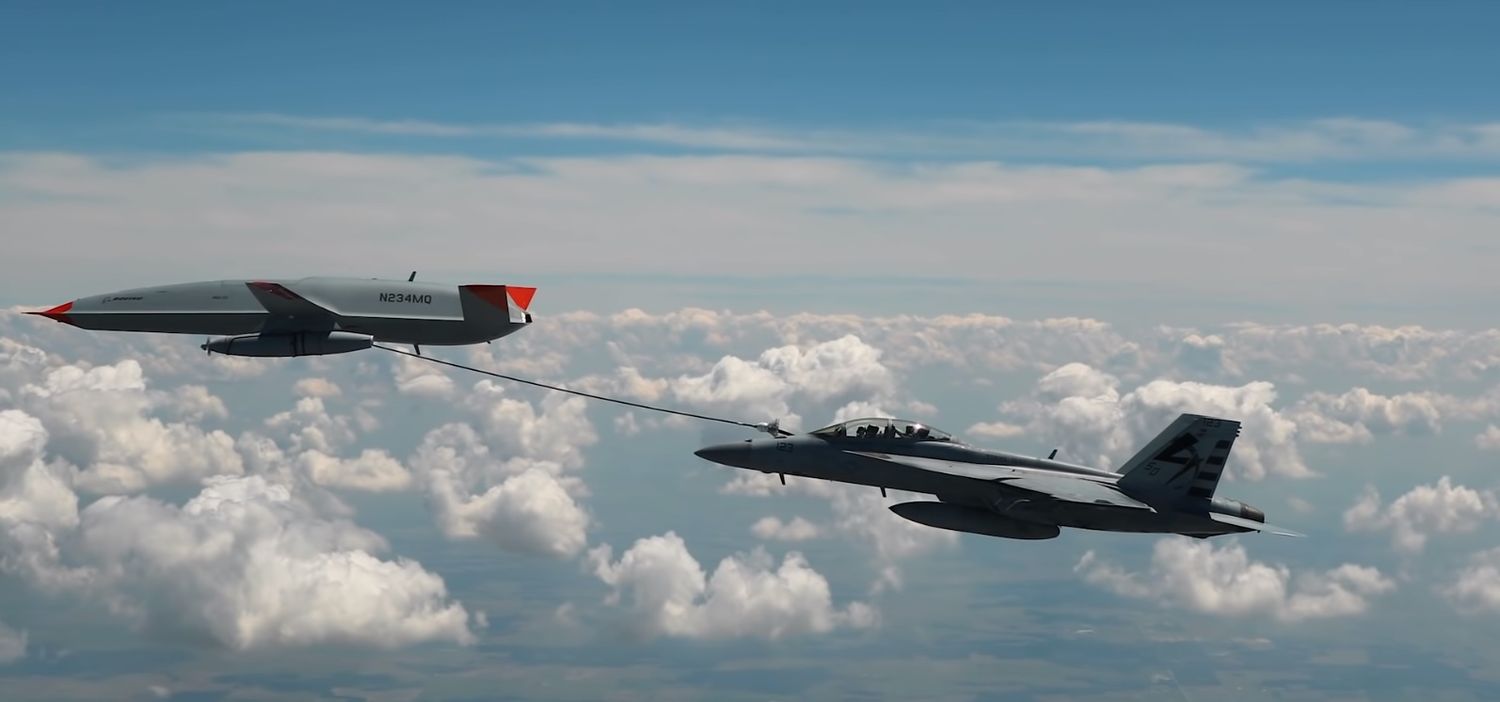Boeing validates software for F/A-18 pilot to control MQ-25 drone during refueling
New software validated by Boeing will allow an F/A-18 Super Hornet manned fighter to control an MQ-25 Stingray drone during in-flight refueling.
The tests show that the software is maturing for future use in the U.S. Navy and that there is potential to deploy the manned-unmanned teaming (MUM-T) capability on both current Block II and future Block III Super Hornets.
In a laboratory simulator, a Boeing-led team virtually demonstrated how an F/A-18 pilot commands an unmanned MQ-25 to release a refueling basket and transfer its fuel to the Super Hornet, using existing communications links on both platforms.
The new software is a refinement of tests previously conducted by Boeing. The updated software makes better use of the hardware and data links already installed on both platforms, optimizing communication channels and enabling the fighter pilot to command the drone directly.
Our manned/unmanned teaming (MUM-T) software is proven in the #MQ25 simulator lab. This tech could allow @USNavy F/A-18 pilots the ability to control the refuel — initiate the fuel line, pull up, fuel up and fly on — from unmanned aircraft like MQ-25 Stingray. #MDM24 pic.twitter.com/CyGqBIOrHN
— Boeing Defense (@BoeingDefense) May 1, 2024
“MQ-25 is designed to typically receive commands from air vehicle pilots on an aircraft carrier. This software will add a second option, enabling pilots to initiate commands right from their cockpit,” said Alex Ewing, F/A-18 New Product Development lead..
The Boeing-created software will significantly reduce the time it takes for an F/A-18 to communicate with an MQ-25, giving pilots greater flexibility in refueling from longer distances.
“The goal of the demonstrations was to make MUM-T refueling as real as possible,” said Juan Cajigas, director, Advanced MQ-25 program. “Aerial refueling is like a ballet as two airplanes come together. To be able to direct the activities via a single pilot, safely and efficiently, is a major step forward in aerial refueling technology.”


Para comentar, debés estar registradoPor favor, iniciá sesión